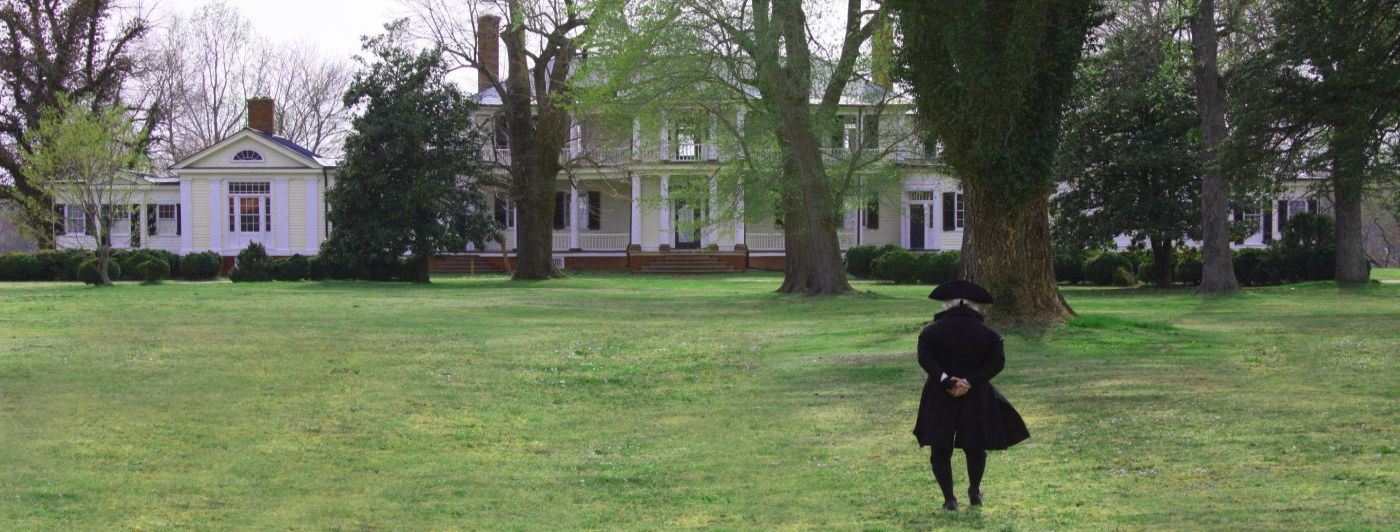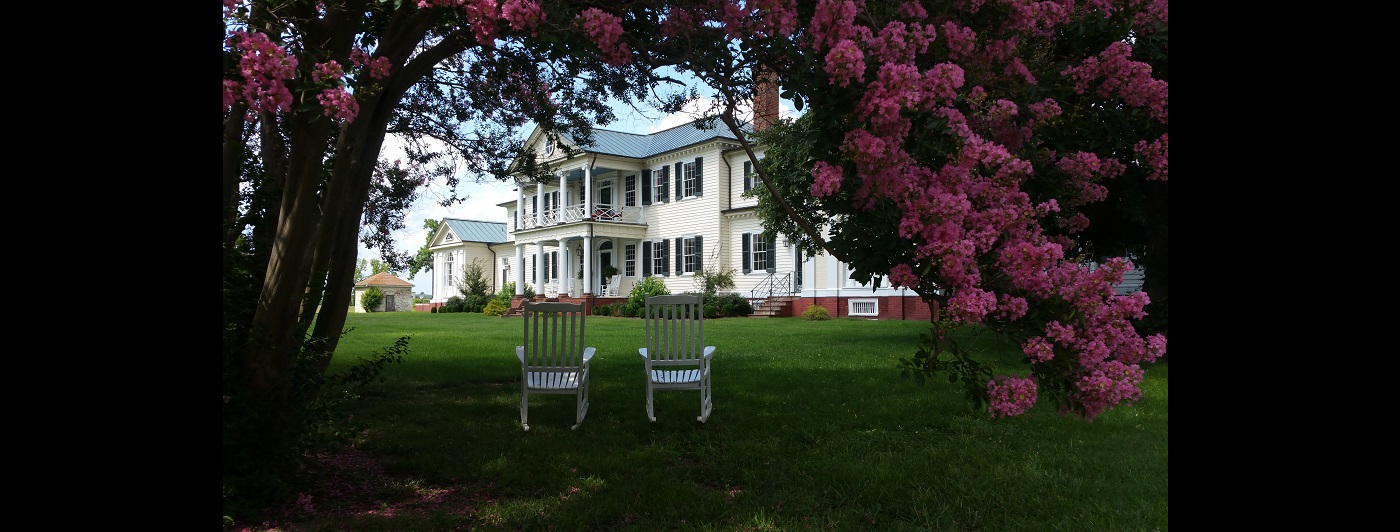Belle Grove and The Civil War
From the time of the first purchase in 1670 to the present, Belle Grove Plantation would see many wars come and go. But none would make as big of an impact as the American Civil War.
In December, 1860, South Carolina seceded from the Union. In January, 1861, Mississippi, Florida, Alabama, Georgia, and Louisiana seceded from the Union. In February, 1861 Texas would seceded from the Union. It was also in February, 1861 that these states would come together in Montgomery, Alabama to adopt a Provisional Constitution and declare themselves the Confederate States of American. They would also elect Jefferson Davis as Provisional President and Alexander Stephens as Provisional Vice President. They would be inaugurated President and Vice President of the Confederate States of America on February 18th, 1861. Abraham Lincoln would be inaugurated on March 4, 1861as President of the United States of America.
On April 12, 1861 at about 4:30am, South Carolina militia would fire the opening shots of the Civil War on Fort Sumter. After thirty-four hours, the Union would surrender Fort Sumter. Just a couple days later, President Lincoln would call up 75,000 volunteers to put down the insurrection. This was followed by several more Southern states seceding from the Union. The first would be Virginia on April 17, 1861. An important note, Virginia had voted on this bill on April 4, 1861 and had voted it down. In May, 1861, Arkansas and Tennessee would secede. On May 20, 1861, North Carolina was the last Southern state to secede. It was also on this date that the Confederate Capital was voted to be moved from Montgomery, Alabama to Richmond, Virginia.
Just four slave states remain Delaware, Maryland, Kentucky and Missouri. All voted down the secession and would remain neutral throughout the war. These states would become “buffer states” between the North and South. While they were considered neutral, they did provide troops to the Confederate forces.
In 1861, Belle Grove was owned by Carolinus Turner. He was a wealthy farmer with 92 slaves. At 48, he had a young family with wife, Susan, 34, Caroline “Carrie”, 12, Anna, 9, George, 8, Susan, 6, and Alice, 5. The Turner’s also had a live-in teacher, Mary Morrison, 23. His assets were listed in the 1860 Federal Census as being $272,500.00 in property. This would drastically change by the end of the war.
The area around Belle Grove Plantation would become very important during the Civil War. On the east side of the Rappahannock River, there were six plantations, Natizco, Woodlawn, Oak Brow, Walsingham, Belle Grove and Millbank that lined the river. On the west side of the Rappannock, there were three plantations, Camden, Gaymont (known as Rose Hill today) and Hazelwood, along with the port city of Port Royal. While these plantations were productive farms, it was the port of Port Royal and its location on the Rappahannock River that would be its greatest asset.
The Rappahannock River in most areas is quite wide, but here between Port Royal and Port Conway, the river narrows, making it an ideal location for crossing for main road ways that had been in use since the late 1600s. Port Royal and Port Conway are also just 20 miles from Fredericksburg.
At the start of the war in 1861, the residents around this area would join the Confederate cause. Most men would enlist with the 9th Virginia Cavalry, the 47th Virginia Infantry or the Caroline Light Artillery. In the 47th Virginia Infantry, they would have been part of Company E and would have been called Port Royal Guards. They would report to Fredericksburg in June, 1861. The Caroline Light Artillery formed in July, 1861 and the 9th Virginia Cavalry would form in January, 1862. Most of these men would fight just within 75 miles of their homes.
Between April, 1862 and August, 1862, Union Forces occupied Fredericksburg. It was in August that Acting Master Nelson Provost, commander of the steamer USS Anacostia conducted a two day expedition from Fredericksburg to Port Royal. He reported to General Ambrose Burnside that he and his crew, along with 25 men of the 9th New York Infantry had progressed down the river towards Port Royal because of reports of communications coming from Port Royal Confederates to both Baltimore and Richmond.
In his report, informants had told of new recruits for the Confederate Army had been ferried across the river from Port Conway to Port Royal with supplies. They would then make their way to Richmond. The location of this ferry was part of Belle Grove Plantation once again. At the time, it would have been part of Port Conway, the town that Captain Francis Conway established in 1878, but was reincorporated back into Belle Grove, from where it came by Carolinus Turner as he purchased the half acre lots.
In this expedition, the Union detachment captured prisoners, destroyed several boats, including the ferry at Port Conway. In December, 1862, four gunboats were sent to Port Royal to support General Burnside’s campaign in Fredericksburg. These gunboats were under the command of Commander Samuel Magaw. General Daniel Harvey Hill and General Rooney Lee defended Port Royal. The Union fleet was forced back down river.
Just a few short days later, the Union Navy started shelling Port Royal to diverted attention from Fredericksburg. This attack lasted two days. The Confederate army held the Union navy at bay until General Hill was called to Fredericksburg. Two days later, General Magaw gave the Confederate army an ultimatum; either evacuate Port Royal or the town would be destroyed. Lt. Colonel Zachariah of the 10th Virginia Cavalry notified the civilian population of Port Royal to evacuate. On hearing the news, General Lee came to Port Royal’s defense and sent troops back to Port Royal. By this time, General Burnside had withdrawn from Fredericksburg so General Magaw did not go through with the mission. Port Royal was saved.
General Robert E. Lee was born not too far from Port Conway and Port Royal at Stratford Hall. During the Civil War, he would have his wife’s cousin, Julia Stuart, wife of Doctor Richard Stuart of Cleydael, to keep his two daughters’ through most of the Civil War. Cleydael is just nine miles from Belle Grove Plantation.

Centre: Mary Custis, the General’s eldest daughter; left: Agnes, the third daughter; right: Mildred, the youngest. No well-authenticated picture of Annie, the second daughter, is known to exist.
Helen Bernard of Gaymont (known as Rose Hill today), daughter of John Hipkins Bernard and his wife Jane Bernard witnessed and wrote about her days during the Civil War. You might remember that John Hipkins Bernard was grandson of John Hipkins, the man that built the current center section of Belle Grove for his daughter, Fannie. Helen Bernard would write of dinners at Gaymont with Confederate officers General JEB Stuart and General Rooney Lee. She would also write about a raid that the Union army made on Port Royal in April, 1863. She would tell of five hundred Yankees pillaging the village, only to leave before the Confederate army arrived.
In August, 1863, two gunboats, the Satellite and the Reliance were captured by the Confederate army and were kept at Port Conway. In September, Brig. General Judson Kilpatrick and his Union forces were sent to Port Conway to recapture or destroy these gunboats. He advanced from King George using three roads, forcing the Confederate forces to move across the river to Port Royal. Early the next morning, Captain S.S. Elder of Battery E, 4th U.S. artillery planted his guns just above and just below the gunboats and opened fire at a range of 700 yards, driving the Confederate forces from the boats. Two hours later, the Satellite was heavily damaged and started to sink. All weapons were fixed then on the Reliance. After another three hours, Brig. General Kilpatrick withdrew and moved to Lamb’s Creek Church, where he had a small fight with some Confederate forces. Afterward he made camp there. The Confederate army took advantage of this and stripped the gunboat of its machinery and guns. The gunboats were too damaged to save. One note; ironclads had been called to use during this fight, but had failed to show. Brig. General Kilpatrick reported only three killed and three wounded. There is no mention of a report from the Confederate forces.

This anchor was found within the last year just infront of Belle Grove Plantation in the river. Could it be one of the anchors from one of the gunboats?
By May, 1864, the Union army had control of Port Royal and made it a supply depot. Helen Bernard would write about General John Abercrombie of the Union army sending a guard to protect her family and remaining slaves. Instead the Union soldiers would take their mules and kill the remaining foals.
The soldiers from Port Royal and surrounding areas would see many from its ranks lost. The 9th Virginia Cavalry started with 1,815, but would be down to just 522 by the time they moved to Gettysburg. At the surrender at Appomattox, they would surrender 27 men, just one officer and 26 men. The 47th Virginia Infantry would start with 1,172 men. By April, 1862 it would be down to just 444 men. At Appomattox, they would surrender just two men. The Caroline Artillery start with 243 men and at Appomattox, they would surrender one officer and 11 men.
As for the Turner Family, we know that Carolinus was involved with the war and was part of the Confederate cause because we have located his pardon issued by President Andrew Johnson. We have a copy of this pardon, but the original is housed in the library in King George, Virginia. We also know that he was part of the Memorial Association of the Confederate. Now to whether he served in the Confederate Army, I have not been able to establish yet. My thought is that he remained at home due to his age. The only son, George would have been too young to serve.
In the 1870 Federal Census, Carolinus Turner was still listed as a farmer. At the age of 57, his wealth dropped from $272,500.00 at the start of the war to $110,000 at the end in 1870. His family Susan, 33, Carrie, 22, George, 17, Susan, 15 and Alice, 14 still lived at Belle Grove.
You have to wonder what this family saw and what they endured during this war. It was just at their door step. Most girls were married by the time they were 22, but Carrie would not marry for another six years. It is no wonder with the loss of men from this area during the war.
We aren’t sure yet if Belle Grove served as a headquarters. What we do know is that during the restoration from 1997 to 2003, no bullet holes or scars from being fired on were found. We hope as we continue our research, we will be able to confirm its use during the Civil War.












































